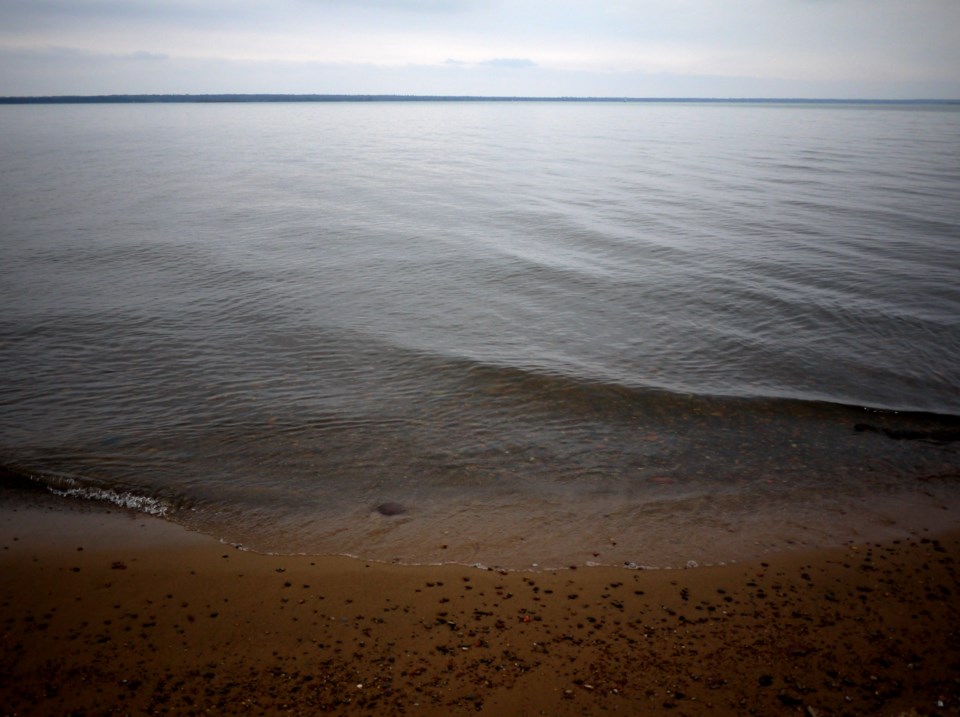Lake Superior water levels have declined to the lowest long-term seasonal average since April 2014, the International Lake Superior Board of Control said in a news release issued today.
This is as a result of the drier-than-average weather over the last month.
On the flip side, because conditions have been wetter than usual in the Lake Michigan-Huron basin, those water levels are currently sitting at approximately midway between the seasonal long-term average and the record-high water levels that were observed last year.
"Lake Superior declined 3 cm (1.2 in) last month, while on average the lake rises 1 cm (0.4 in) in August," the release explains. "Lake Michigan-Huron declined 2 cm (0.8 in) last month, while on average the lake declines 4 cm (1.6 in) in August. At the beginning of September, Lake Superior is 1 cm (0.4 in) below the seasonal long-term average (1918-2020) and 26 cm (10.2 in) below the level of a year ago. Lake Michigan-Huron is 45 cm (17.7 in) above average and 40 cm (15.7 in) below the record-high level set at this time last year."
The full release is as follows:
As a result of the drier than average weather and water supply conditions in the Lake Superior basin, Lake Superior water levels have declined and have reached the seasonal long-term average for the first time since April 2014. Conditions have been wetter than average in the Lake Michigan-Huron basin and water levels are approximately midway between the seasonal long-term average and the record-high water levels that were observed last year. Lake Superior outflows continue to be set in consideration of water levels upstream and downstream.
The Board expects the total outflow to be 2,110 m3 /s (74.5 tcfs) in September, which is as prescribed by Lake Superior Regulation Plan 2012. The gate setting at the Compensating Works will be maintained at the setting equivalent to one-half gate open (Gates #7 through #10 partially open 20 cm). There will be no change to the setting of Gate #1, which supplies a flow of about 15 m3 /s to the channel north of the Fishery Remedial Dike.
Weather and water supply conditions were drier than average in the Lake Superior basin and wetter than average in the Lake Michigan-Huron basin in August. As a result, Lake Superior declined 3 cm (1.2 in) last month, while on average the lake rises 1 cm (0.4 in) in August. Lake Michigan-Huron declined 2 cm (0.8 in) last month, while on average the lake declines 4 cm (1.6 in) in August. At the beginning of September, Lake Superior is 1 cm (0.4 in) below the seasonal long-term average (1918-2020) and 26 cm (10.2 in) below the level of a year ago. Lake Michigan-Huron is 45 cm (17.7 in) above average and 40 cm (15.7 in) below the record-high level set at this time last year.
Lake Superior and Lake Michigan-Huron water levels typically decline in September. Depending on the weather and water supply conditions during the next month, Lake Superior may rise slightly or may decline by up to 7 cm (2.8 in) in September. Lake Michigan-Huron water levels could decline by as much as 15 cm (5.9 in).
Shoreline businesses and property owners are reminded that the Great Lakes – St. Lawrence River Adaptive Management (GLAM) Committee continues to host an online questionnaire to allow for direct reporting on impacts related to high water conditions.
